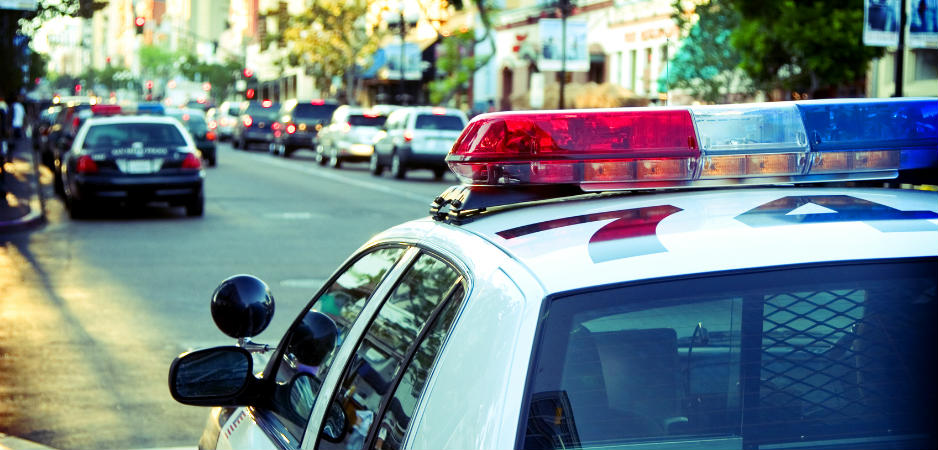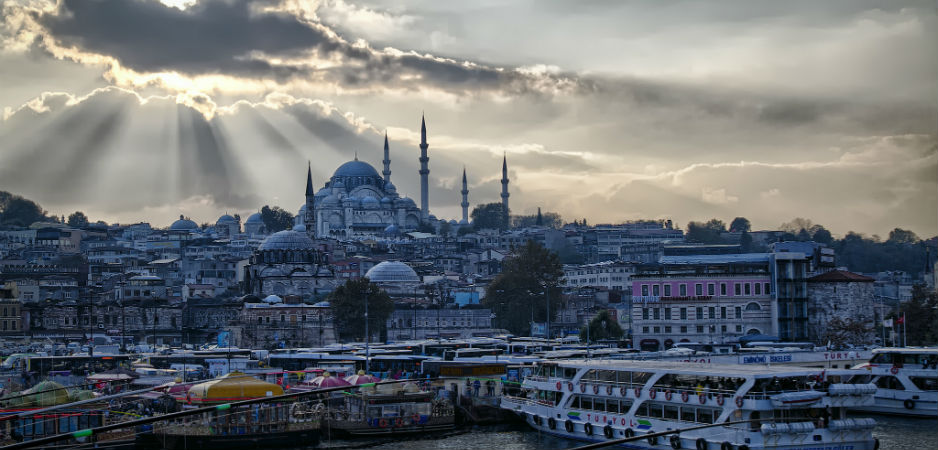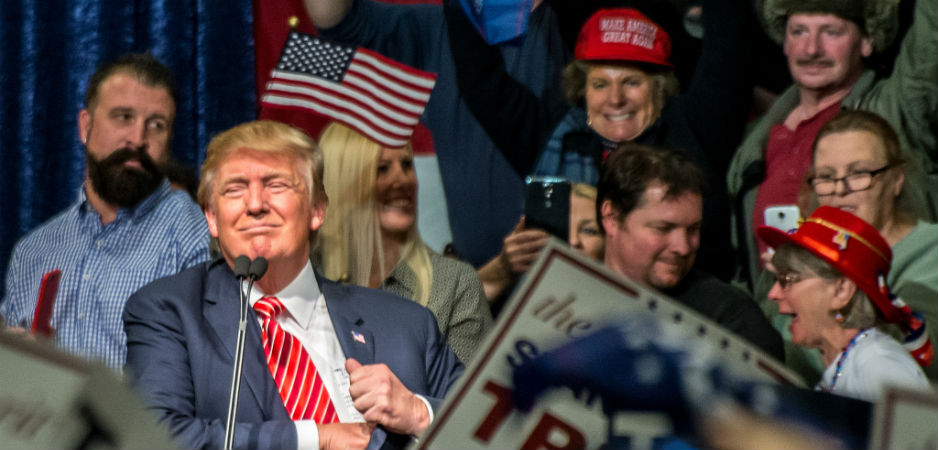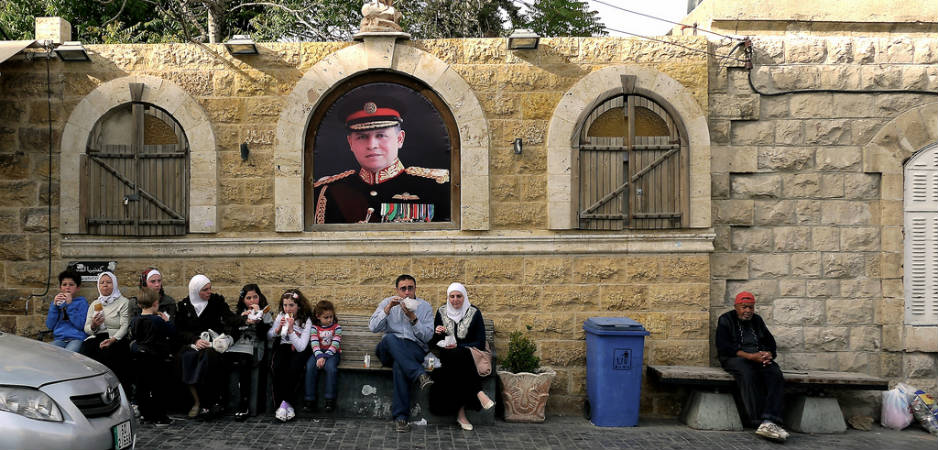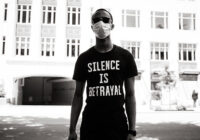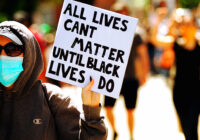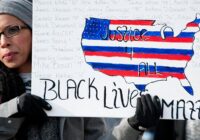Violent policing and mass incarceration are unjust, expensive and counterproductive, making reform of the criminal justice system an urgent priority for the US.
Last week, the focus was terrorism. This week, it is wanton violence in the US. On July 7, a young woman live-streamed a video of her dying fiancé who had just been shot four times by police in Minnesota. This followed a video that showed police in Louisiana shooting an immobilized man on the floor. Unsurprisingly, both dead men were African Americans.
Worse was to follow. Micah Johnson, an angry 25-year old, killed five police officers and wounded another seven. He also wounded two civilians. It turns out that Johnson had been a member of the US Army Reserve who had served in Afghanistan. He had no history of crime and is not a Muslim with links to sinister groups like the Islamic State. In the words of Dallas Police Chief David Brown, Johnson, an African American war veteran, was “upset about the recent police shootings.” Hence, “he wanted to kill white people, especially white officers.”
Ironically, Dallas is one of the better police forces in the United States. Brown is African American himself and has ushered in a new era of community policing. Scarred by personal tragedy, the police chief has focused on de-escalation instead of force and brought in a new era of transparency. The results have proved to be impressive. In an interview with Dallas Observer earlier this year, Brown pointed out that Dallas is safer now than at any time in the last 86 years.
Not all places are like Dallas in the land of Uncle Sam. Unlike the United Kingdom where Bobbies are reputed to be courteous, trustworthy and helpful, many perceive the police in the US to be a gang of thugs in uniform. There are good reasons for this reputation. In 2015, Mother Jones featured chilling videos of 13 police killings. Victims included unarmed men who were shot in the back, a homeless man who was gunned down unnecessarily and an innocent 12-year old who was summarily shot.
The militarization of US police and its trigger happy ways are well chronicled. In May 2015, The Economist summarized succinctly how the police became so heavily armed. The National Defense Authorization Act of 1990 arguably began the trend. The attacks of September 11, 2001, made militarization exponential. Washington, DC disbursed $35 billion to state and local forces between 2002 and 2011.
In 1980, Special Weapons and Tactics (SWAT) teams were deployed 3,000 times. This figure has since risen to more than 50,000 a year. Ironically, violent crime has been falling during this period. War Comes Home, a report by the American Civil Liberties Union, points out how SWAT teams are routinely used to search people’s homes for drugs and escalate the risk of needless violence. Radley Balko, the author of The Rise of the Warrior Cop, has long argued that the police increasingly pay little heed to people’s civil rights or their safety, and avoid pesky scrutiny or public accountability.
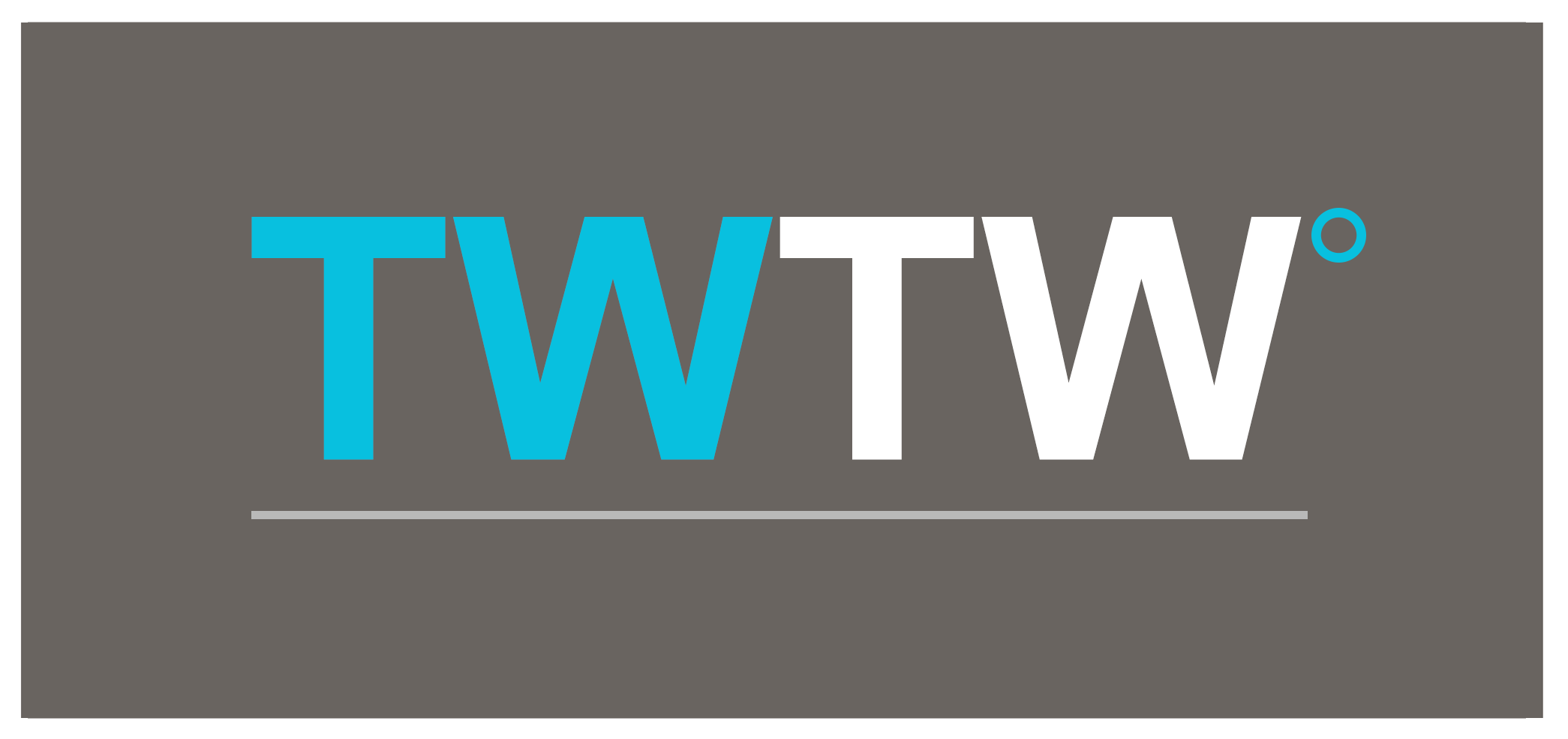 In the US, the police tend to get away with use of force that includes shootings. Judges and juries sympathize with men in uniform. After all, policemen risk life and limb to keep their communities safe. The operating assumption in the US is that the police shoot first and ask questions later because they have few other options. African American neighborhoods are plagued by the curse of young single mothers, broken families, chronic drug addiction, vicious gangs and a culture of criminality. In a highly-armed society where many young African American men have far too much attitude and no respect for authority, the police are fair game. So, the police perforce have to be trigger happy to minimize their personal risk of ending up six feet under.
In the US, the police tend to get away with use of force that includes shootings. Judges and juries sympathize with men in uniform. After all, policemen risk life and limb to keep their communities safe. The operating assumption in the US is that the police shoot first and ask questions later because they have few other options. African American neighborhoods are plagued by the curse of young single mothers, broken families, chronic drug addiction, vicious gangs and a culture of criminality. In a highly-armed society where many young African American men have far too much attitude and no respect for authority, the police are fair game. So, the police perforce have to be trigger happy to minimize their personal risk of ending up six feet under.
There is only a sliver of truth to this assumption. It is true that the police face greater risks in the US than in, say, Norway. Yet part of the reason they face risks is because they use excessive force. If a young African American believes that he is likely to be beaten or shot, then he is more likely to fight or shoot back. The Old Testament dictum of an eye for an eye tends to make the world blind. Such is the scale of the problem that, even in 1994, the US Department of Justice was recommending police psychologists to control the use of excessive force by the police.
Psychologists might help but the problem runs much deeper. For the last few years, Fair Observer has been shining the light on the race problem in the US. On April 10, 2015, this author argued that some are still less equal in the US today. The life, liberty and pursuit of happiness continue to be in jeopardy 150 years after the American Civil War.
In fact, American statistics make grim reading. As per a report published by the United Nations Human Rights Committee (UNHRC), democratic America locks up more people than repressive Russia or oppressive Egypt. According to the Prison Policy Initiative (PPI), the criminal justice system in the US holds more than 2.3 million people behind bars. Mass incarceration is as American as apple pie, leaving this country with no moral authority to preach to anyone about human rights and opening it to the justified charge of sanctimonious hypocrisy.
As the PPI trenchantly points out, the 2.3 million figure fails to capture “the enormous churn in and out” of prisons or the much greater number of people whose lives are blighted by criminal justice system. Tellingly, “every year, 636,000 people walk out of prison gates, but people go to jail over 11 million times each year.” Far too many people are locked up for drug offenses and most young people end up in jail for nonviolent offenses. A report by the US Department of Education has found that “state and local spending on prisons and jails has increased at triple the rate of funding for public education for preschool through grade P-12 education in the last three decades.” This is pure madness.
Simmering volcanoes of anger and resentment are likely to erupt as in Dallas. It is high time for the US to end the madness of mass incarceration.
Mass incarceration is the heart of darkness in the US. Merely 5% of the world’s population lives in the land of the free and the home of the brave, but Uncle Sam takes credit for more than 20% of the world’s incarcerated population. Young black men between 20 and 24 “have a greater chance of being incarcerated than employed.” As per the above mentioned report, most who end up in “prisons and jails come from disadvantaged neighborhoods in the country’s biggest cities.”
Not only is mass incarceration highly unjust, but it is also incredibly expensive. In 2006, the Spatial Information Design Lab at Columbia University found that “states are spending in excess of a million dollars a year to incarcerate the residents of single city blocks.” These “million dollar blocks” represent all that has gone wrong with the criminal justice system since the Ronald Reagan era.
In 1980, when the Gipper ascended to the throne, about 490,000 people were in US correctional facilities. That number has since exploded thanks in no small part to the War on Drugs that Reagan declared on in 1982. Most studies conclude that drug use is similar among blacks and whites. Yet the UNHCR report documents that, between 1980 and 2000, the black drug arrest rate in the US rose dramatically from 6.5 to 29.1 per 1,000 persons, while the white drug arrest rate increased marginally from 3.5 to 4.6 per 1,000 persons.
Reagan is venerated as a great god in the Republican pantheon where some devotees place him on the same pedestal as Abraham Lincoln. In this Americano myth, the Gipper was a visionary leader who slayed the fire-breathing dragon of communism, unleashed the power of the markets, and ushered in reforms that got the government off the backs of an oppressed people. The reality is that this third rate actor played dog-whistle politics to gain the support of white supremacists and kicked off his 1980 election campaign at the Neshoba County Fair.
Neshoba County in Mississippi evokes frightening memories from the American past. It was here that three civil rights workers were shot on one dark night in 1964 on a lonely road. They were volunteers working in the Civil Rights Movement, chipping away segregation, exploitation and white domination in the Deep South. After all, this was once a land of slavery where “negroes” were tortured, raped and killed with impunity for years. The Ku Klux Klan had been carrying out a campaign of terror, but by killing three young white men they crossed a bridge too far. The Gipper who opposed the Civil Rights Act of 1964 and supported the South African apartheid regime was turning the clock back to the pre-1964 era.
In Neshoba, Reagan declared that he believed in states’ rights—a claim that harks back to the legacy of slavery, Jim Crow and segregation in the Deep South. When Reagan was elected, this self-professed small government champion unleashed the power of the state against the marginalized and the impoverished. Unsurprisingly, these happen to be descendants of African slaves that were brought in to pick cotton at the lovely ante-bellum plantations south of the Mason-Dixon Line.
In March 2015, the Department of Justice published a telling report on the Ferguson riots of the previous year. It chronicled how the city increased municipal fines and fees to earn revenues. This turned the police into vigilantes who violated the Fourth Amendment that secures citizens against unreasonable searches and seizures. One of the cases mentioned in the report was that of an African American who was arrested at gunpoint, falsely accused of being a pedophile and then charged with eight violations of the municipal code, causing the loss of his long-standing job as a contractor with the federal government. The report chronicled a familiar story of racism, discrimination, exploitation, arrogance, abuse and impunity that infuriate black communities across the country.
In April 2016, the Executive Office of the President of the United States released a report analyzing the economics of incarceration and criminal justice system. It calculated the incarceration rate to have grown by more than 220% between 1980 and 2014. It blamed “higher conviction rates and longer sentences” for what it called “the incarceration boom.” Unsurprisingly, this report made the common sense argument that better education and more jobs would cause a greater drop in crime than locking up people willy-nilly. Apart from the $270 billion that the criminal justice system costs every year—of which $80 billion is the cost of incarceration alone—there are “indirect costs, or collateral consequences,” for individuals, families and communities.
Once upon a time, not a very long time ago, killing Native Americans and bringing slaves from Africa made sense. European settlers needed land and natives were in the way. Some of this acquired land was fit for cotton cultivation, and the US lacked populous lower castes as in India or serfs as in Russia. Dark skinned savages from Africa who could work in the blazing sun were the answer. Locking up the descendants of these slaves makes no sense as it costs far too much and fails what some worthies in the White House call the “cost-benefit test.”
Truth be told, the US has waged class war and criminalized poverty surreptitiously for more than three decades. Punitive laws, draconian policing and tough sentencing unjustly and expensively lock up far too many people for much too long. The status quo is untenable. Simmering volcanoes of anger and resentment are likely to erupt as in Dallas. It is high time for the US to end the madness of mass incarceration.
*[You can receive “The World This Week” directly in your inbox by subscribing to our mailing list. Simply visit Fair Observer and enter your email address in the space provided. Meanwhile, please find below five of our finest articles for the week.]
Why Can’t Islam Unite Against Violent Extremism?
The war, battle or campaign against Islamic extremism is one that only Muslims can lead.
After at least 15 years of violent extremism within its ranks, Islam has still not organized an effective counter campaign toward the proponents of extremist Islam, such as the Islamic State (IS), al-Qaeda and others. One need only look at the events of last week during Islam’s holiest month, Ramadan.
Terrorist attacks in Turkey, Bangladesh, Iraq and Saudi Arabia have claimed the lives of over 350 victims, mostly Muslims. The latter occurred in Islam’s second-most revered city, Medina, home to the mosque and tomb of the Prophet Mohammed. All of the attacks are believed to be the responsibility of the Islamic State. One might also add the Orlando nightclub attack of June, whose perpetrator claimed to be acting in the name of IS.
According to the organization The Religion of Peace (TROP), this year’s Ramadan… Read more
When Anger Wins, We All Lose
Political dysfunction is the most destructive component of failed governance in America’s version of democracy.
America is slowly coming to the climax of its painfully long presidential election process. As usual, there is much talk about choices and little talk about the process for deciding which choices to make. With the present election cycle culminating in a choice between two candidates with a lot of negative baggage, it is even more essential that voters take the time before voting to substantively connect each candidate’s policy pronouncements to desired outcomes.
We have just been treated to the spectacle of the voters in the United Kingdom making a choice and then seemingly regretting that choice as soon as the consequences of the choice became obvious. This can only happen when choices are made in a substantive vacuum created by misinformation, irresponsible rhetoric and, in this case, xenophobia. As a bit of background… Read more
The Cultural Wasteland of Television
How is television affecting our life?
The inference is simple: There exists a definitive, albeit subtle, social force that, more than any other, conducts a sort of free-floating or psychological dialogue with us all. More so within our family. It’s the one that’s influencing, reflecting and refracting the other. Its identity: TV. It’s a propelling force, a coincidence of technology. Yet there’s a paradox. Force or no force, TV was and is fully, and also exponentially, bound up with the family from the beginning.
In its initial glut, TV seemed to be just one more essentiality in a long line of mechanical devices—one for home entertainment. Soon, its impact was tremendous. It began to fulfill a cultural function—a way in which family values could be acted out and maintained.
The number of television sets in India, to cull one classical example, increased from 9 million in early 1987… Read more
Music Can Combat Extremism in South Asia
Indigenous culture, especially music, is the way to reach young Pakistanis and counter extremism.
On June 22, the global campaign to counter violent extremism (CVE) lost one of its most powerful messengers when gunmen linked to the Pakistani Taliban murdered the beloved qawwali singer Amjad Sabri in Karachi.
Not that Sabri was working with the US State Department, the Pentagon or any foreign government, but the ecstatic celebration of divine love that is qawwali music is, to quote leading Pakistani playwright Shahid Nadeem, “the most powerful and popular vehicle for spiritual and cultural uplift of the masses. It bypasses indoctrination, bigotry, sectarianism, and liberates, emancipates, empowers.”
Sabri’s case is still under investigation given the political complexity of a metropolis like Karachi, but high profile adherents of Sufi Islam remain under threat in Pakistan.
Qawwali music and the Sufi tradition to which it belongs represent the antithesis of the Wahhabi-inspired fundamentalism… Read more
Ramadan Holds Lessons for Job Market in Arab World
In the Arab world and beyond, many young people do not see the benefit of working as learning.
Being in Jordan gives me the opportunity to focus on lessons that come from everyday experiences sometimes overlooked in the frenetic pace of living in the US. For example, during Ramadan, we are all encouraged to slow down, reflect and renew our spiritual as well as human relationships in deeper and richer ways. This is true no matter what faith you are—Ramadan is pervasive in its impact on our daily lives.
In June, I was struck, during iftar (evening meal) at a friend’s house, at how the fruit in particular seemed to be so much sweeter than in Washington, DC. I remarked on this to my friend, and he replied that everything tastes better in Ramadan because of the physical and spiritual anticipation of enjoyment that comes from fasting and prayer… Read more
The views expressed in this article are the author’s own and do not necessarily reflect Fair Observer’s editorial policy.
Photo Credit: MCCAIG
 We bring you perspectives from around the world. Help us to inform and educate. Your donation is tax-deductible. Join over 400 people to become a donor or you could choose to be a sponsor.
We bring you perspectives from around the world. Help us to inform and educate. Your donation is tax-deductible. Join over 400 people to become a donor or you could choose to be a sponsor.
Support Fair Observer
We rely on your support for our independence, diversity and quality.
For more than 10 years, Fair Observer has been free, fair and independent. No billionaire owns us, no advertisers control us. We are a reader-supported nonprofit. Unlike many other publications, we keep our content free for readers regardless of where they live or whether they can afford to pay. We have no paywalls and no ads.
In the post-truth era of fake news, echo chambers and filter bubbles, we publish a plurality of perspectives from around the world. Anyone can publish with us, but everyone goes through a rigorous editorial process. So, you get fact-checked, well-reasoned content instead of noise.
We publish 2,500+ voices from 90+ countries. We also conduct education and training programs
on subjects ranging from digital media and journalism to writing and critical thinking. This
doesn’t come cheap. Servers, editors, trainers and web developers cost
money.
Please consider supporting us on a regular basis as a recurring donor or a
sustaining member.
Will you support FO’s journalism?
We rely on your support for our independence, diversity and quality.


